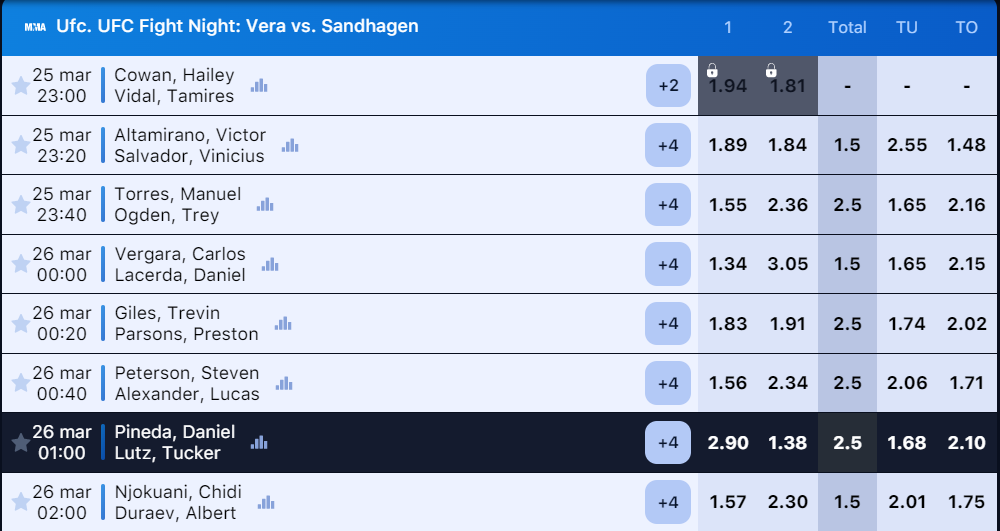Before you start betting on the UFC, you should figure out what it is with what it is eaten, since betting is not only “luck”, but also a cold calculation in conjunction with the analytics of each sport. In this section, we will find out what events exist under the auspices of the UFC, as well as what weight categories are.
In total, Dana White, the owner of the roster, holds two types of tournaments, which have some differences between them. And in order to bet on fights without UFC rules correctly, you need to understand and understand how they differ.
- The first type of events are numbered tournaments, for example, UFC 256. These tournaments attract the maximum amount of attention, as more eminent athletes perform at them. Accordingly, the level of battles is not only higher, but also many times more interesting. On them you can often see title fights, as well as confrontations between fighters from the top 10 positions in their weight category.
- The second type of event is UFC Fight Night. These tournaments are held more often than number ones and are often intermediate between number ones. They are mainly performed by fighters who enjoy less public interest, and are also lower in the rating. They rarely see fights for the title and other interesting confrontations.
Knowing this information, you will be able to choose the right event for your first UFS bet online.
Weight classes and why are they so important?
All fighters in the UFC roster are divided among themselves into 10 different weight categories, which accordingly depend on how much the athlete weighs. But they differ not only in this, but also in the unique characteristics of the athletes, which we will list below.
| Weight category |
Weight |
Gender |
| Heavy weight |
93-120 |
Male |
| Light Heavyweight |
84-93 |
Male |
| Average weight |
77-84 |
Male |
| Welterweight |
70-77 |
Male |
| Light weight |
66-70 |
Male |
| Featherweight |
61-66 |
Male/Female |
| Bantamweight |
57-61 |
Male/Female |
| Flyweight |
53-57 |
Male/Female |
| Minimum weight |
48-52 |
Female |
Now let’s see how they differ, using the example of fighters.
Fighters in heavy weight categories are characterized by the following qualities: low stamina and fairly dense punches. This entails such consequences as: frequent early victories, as well as a large percentage of knockouts.
Middleweight and welterweight fighters are the so-called “border guards”. It is quite difficult to single out some weak and strong points here, because there are a lot of different fighters in this weight category. Someone has a dense physique and short stature, which entails the disadvantages of a heavyweight fighter, while someone, on the contrary, is stocky and tall, which brings him closer to light weight fighters. These factors make these weight categories one of the most difficult to start betting on UFC fights from them.
Lightweight fighters are very hardy athletes who have biting and often combinational series of punches. Fights in this weight category last longer and fights often reach the referee’s decision.




